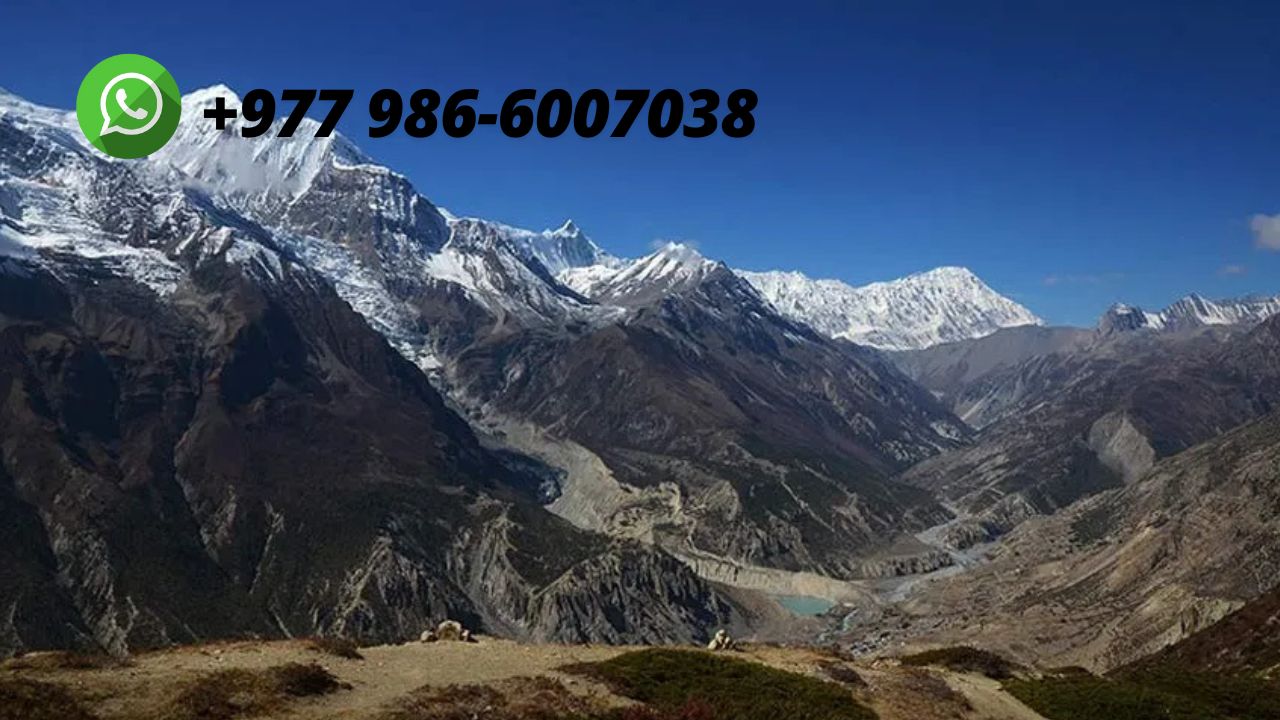Discover the Beauty of Annapurna Circuit Trek with a Sherpa Guide
The Annapurna Circuit Trek is one of the most sought-after trekking routes in the world, offering trekkers an incredible mix of natural beauty, rich culture, and adventure. Nestled in the majestic Himalayas of Nepal, the trek takes you through lush forests, charming villages, high-altitude deserts, and some of the most breathtaking mountain views in the world. Whether you’re a seasoned trekker or a novice hiker, the Annapurna Circuit promises an unforgettable experience that combines challenge, beauty, and cultural immersion.
In this article, we’ll guide you through the Annapurna Circuit Trek, providing you with a detailed itinerary, essential tips, and insights into the trek, ensuring you’re well-prepared for one of the most beautiful hikes on the planet.
Introduction to the Annapurna Circuit Trek
The Annapurna Circuit Trek, located in the Annapurna Conservation Area in Nepal, is famous for its stunning views of the Annapurna Massif, Dhaulagiri, and other towering peaks. This trek takes you through varying landscapes, from lush subtropical forests to barren, high-altitude deserts, crossing diverse terrains that provide an insight into the ecological and cultural richness of the region.
One of the primary highlights of the Annapurna Circuit Trek is the Thorong La Pass—standing at 5,416 meters (17,769 feet), it’s one of the highest trekking passes in the world. The trek also passes through vibrant villages inhabited by ethnic communities such as the Gurung, Magar, Thakali, and Manangi people, offering trekkers a glimpse into the traditional mountain lifestyle.
The trek’s diverse environment includes not only towering snow-capped peaks but also lush subtropical valleys, alpine meadows, and desert-like terrain. It provides trekkers with an incredible journey of discovery and adventure, where the natural world meets rich cultural heritage.
Best Time to Trek the Annapurna Circuit
The Annapurna Circuit Trek can be completed year-round, but certain times of the year offer better weather and conditions for trekking. The two primary trekking seasons are:
- Spring (March to May): This is one of the best seasons for trekking the Annapurna Circuit. The weather is stable, the skies are generally clear, and the landscapes are lush with blooming rhododendrons. The temperatures are moderate, making it ideal for trekking, especially at higher altitudes.
- Autumn (September to November): Autumn is another popular season for the trek, offering similar weather conditions to spring—clear skies, moderate temperatures, and perfect trekking conditions. This season attracts many trekkers, making it a bustling time on the trail but with plenty of opportunities for interaction with other trekkers and locals.
- Monsoon (June to August): While the monsoon season brings lush greenery to the lower altitudes, the rain can make the higher trails slippery and difficult. The trekking path may be muddy, and some sections may be temporarily closed due to landslides. Trekking during this time is not recommended unless you are an experienced hiker prepared to handle the risks.
- Winter (December to February): Winter trekking on the Annapurna Circuit offers fewer crowds and a more peaceful experience, but it can be very cold, especially in higher altitudes. The paths can also be covered in snow, making it more challenging. If you’re well-prepared for cold weather and snow, winter trekking can be rewarding, but it requires extra preparation and caution.
Annapurna Circuit Trek Itinerary: A Day-by-Day Guide
The typical Annapurna Circuit Trek lasts between 12 to 21 days, depending on your pace, acclimatization needs, and the route you take. The following 14-day itinerary is designed to offer a well-paced trek while providing time for acclimatization, ensuring your safety and enjoyment during the trek.
Day 1: Arrival in Kathmandu
Your journey to the Annapurna Circuit Trek begins with your arrival in Kathmandu, the capital of Nepal. After checking into your hotel, take the time to relax and recover from your flight. In the evening, you’ll meet your guide for a pre-trek briefing, where you’ll discuss your Annapurna Circuit Trek Itinerary, safety protocols, and final preparations. This is also a great time to purchase any necessary trekking gear you might need.
Overnight stay: Kathmandu
Day 2: Drive from Kathmandu to Besisahar
After breakfast, you’ll begin the first leg of your journey by driving to Besisahar, the starting point of the Annapurna Circuit Trek. The drive takes approximately 6 to 7 hours, with scenic views along the way, including terraced fields, rivers, and small mountain villages. Besisahar is a bustling town and serves as a great place to acclimatize before starting the trek.
Overnight stay: Besisahar
Day 3: Trek from Besisahar to Ngadi
Your trek begins today as you walk from Besisahar to Ngadi, which takes around 4 to 5 hours. The trail follows the Marsyangdi River, passing through terraced fields and tropical forests. As you leave the lowland areas behind, the stunning views of the surrounding mountains begin to emerge. Ngadi is a small village where you’ll spend the night.
Overnight stay: Ngadi
Day 4: Trek from Ngadi to Jagat
On this day, you’ll continue from Ngadi to Jagat. The trek takes you through narrow paths and steep climbs, passing traditional stone houses and terraced fields. Jagat is a beautiful village where you can experience the charm of the local lifestyle. The trek today will take approximately 5 to 6 hours.
Overnight stay: Jagat
Day 5: Trek from Jagat to Dharapani
From Jagat, you’ll continue to Dharapani, a village at the junction of the Annapurna Circuit and the Manaslu Circuit. The trail today is a moderate climb through forests and across suspension bridges, offering glimpses of the snow-covered Annapurna peaks. The trek from Jagat to Dharapani will take around 6 to 7 hours.
Overnight stay: Dharapani
Day 6: Trek from Dharapani to Chame
Today’s trek from Dharapani to Chame takes you through pine forests, offering beautiful views of the surrounding mountains. Chame is the administrative headquarters of the Manang district and serves as a perfect place for acclimatization. The trek today takes approximately 6 hours.
Overnight stay: Chame
Day 7: Trek from Chame to Pisang
You’ll continue from Chame to Pisang. The journey takes you higher in elevation, passing through forests and small villages along the way. Pisang is set amidst spectacular mountain views, offering an incredible opportunity for photos and rest. Expect to trek for around 5 to 6 hours.
Overnight stay: Pisang
Day 8: Trek from Pisang to Manang
From Pisang, you’ll trek to Manang, a larger village that offers spectacular views of Annapurna II and other surrounding peaks. The day’s trek is moderate, taking approximately 5 to 6 hours. This is also an important day for acclimatization, and you can explore Manang’s vibrant culture and monasteries.
Overnight stay: Manang
Day 9: Rest and Acclimatization Day in Manang
Acclimatization is essential for successfully completing the Annapurna Circuit Trek. You’ll take a rest day in Manang, which helps your body adjust to the increasing altitude. During this day, you can explore the local area, visit the Manang Monastery, or take a short hike to gain better views of the surrounding peaks.
Overnight stay: Manang
Day 10: Trek from Manang to Yak Kharka
Today, you’ll continue your journey to Yak Kharka, located at 4,050 meters (13,287 feet). This trek is moderate in difficulty and takes around 4 to 5 hours. The landscape becomes more barren and alpine as you ascend, and the air grows thinner.
Overnight stay: Yak Kharka
Day 11: Trek from Yak Kharka to Thorong Phedi
Your trek today takes you to Thorong Phedi, located at the base of the Thorong La Pass. This is a crucial stop before attempting the pass. The trek takes about 4 to 5 hours, and the path is steep in sections. Ensure you take your time and hydrate well to prepare for the next day’s challenging ascent.
Overnight stay: Thorong Phedi
Day 12: Cross Thorong La Pass to Muktinath
Today is the highlight of the Annapurna Circuit Trek—the crossing of the Thorong La Pass. The ascent is challenging, but the panoramic views from the top are worth every step. After crossing the pass, you’ll descend to Muktinath, a sacred pilgrimage site for both Hindus and Buddhists. The trek today will take 8 to 10 hours, but the sense of accomplishment upon reaching Muktinath makes it all worthwhile.
Overnight stay: Muktinath
Day 13: Trek from Muktinath to Jomsom
From Muktinath, you’ll make your way down to Jomsom, a larger town situated in the Kali Gandaki Valley. This trek takes about 5 to 6 hours and offers a chance to enjoy the scenic beauty of the valley. Jomsom is a popular stop for trekkers, and you can relax and reflect on your achievement.
Overnight stay: Jomsom
Day 14: Fly from Jomsom to Pokhara
The final leg of your journey takes you from Jomsom to Pokhara by a short, scenic flight. This flight offers spectacular aerial views of the surrounding mountains and valleys. Once in Pokhara, you can relax, explore the lakeside area, and enjoy the stunning natural beauty of the region.
Overnight stay: Pokhara
Key Highlights of the Annapurna Circuit Trek
Throughout the Annapurna Circuit, trekkers are treated to an array of stunning highlights, including:
- Thorong La Pass: One of the highest trekking passes in the world, offering spectacular panoramic views.
- Breathtaking Mountain Views: The trek provides unmatched views of Annapurna, Machapuchare, Dhaulagiri, and many more.
- Cultural Encounters: Trekking through villages such as Manang and Pisang allows you to immerse yourself in the local culture and traditions of the Gurung, Thakali, and Magar people.
- Diverse Ecosystems: From lush subtropical forests to dry high-altitude deserts, the trek covers a wide variety of ecological zones, each with its own unique flora and fauna.
Tips for a Successful Annapurna Circuit Trek
- Preparation is Key: Ensure you’re physically fit for the challenge. Cardiovascular exercises, strength training, and long hikes will prepare you for the trek’s demanding terrain.
- Pace Yourself: Take rest days as necessary, especially in higher altitudes, to allow your body to adjust and avoid altitude sickness.
- Pack Smart: Lighten your load by packing only the essentials—comfortable clothing, sturdy trekking boots, a sleeping bag, and essentials like sunscreen, hats, and gloves.
- Stay Hydrated: The altitude can dehydrate you, so make sure you drink enough water throughout the trek.
- Respect Local Culture: Be mindful of the traditions and customs of the local people, and always ask for permission before taking photos of locals or their homes.
Conclusion
The Annapurna Circuit Trek is a journey that combines adventure, cultural exploration, and awe-inspiring natural beauty. The route offers challenges that will test your endurance, but the rewards—whether it’s crossing Thorong La Pass or witnessing the stunning beauty of the Annapurna Massif—are truly unforgettable. With proper preparation, this trek promises to be an experience of a lifetime. Whether you’re embarking on the trek for the challenge or the cultural immersion, the Annapurna Circuit is bound to leave you with lifelong memories






